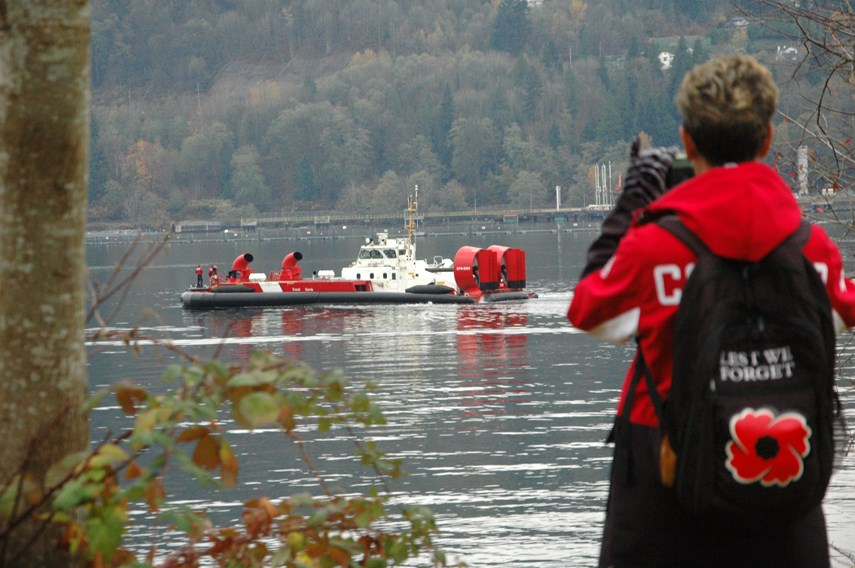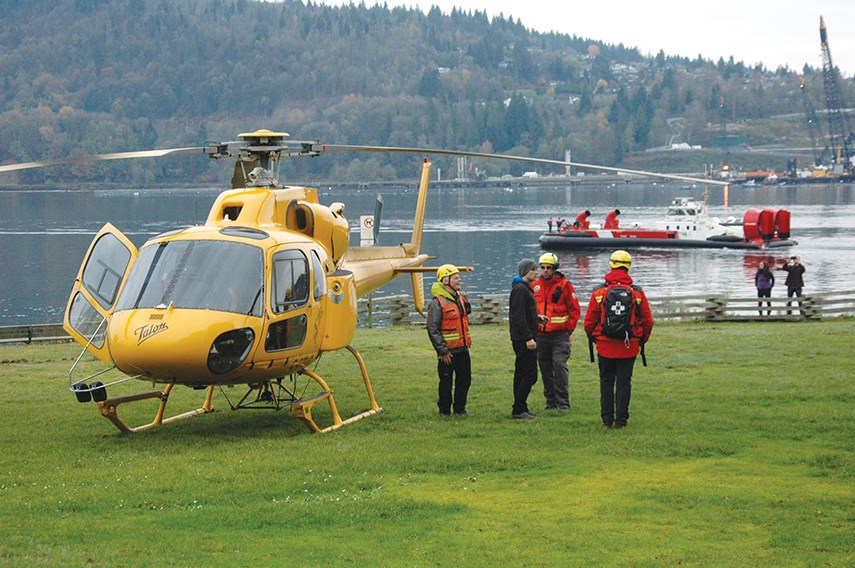It’s been seven days since a 7.3-magnitude quake shook the Strait of Georgia. Our bridges are still standing but structural engineers haven’t yet determined if they’re safe to cross. The trouble is, most of our emergency and municipal workers are on the other side.
That’s the scenario North Shore Emergency Management simulated Tuesday morning, bringing in, by air and by sea, more than 100 personnel who would be critical to keeping the lights on in days after a disaster.
“It’s always a great opportunity for our first responders and people involved in the relief effort to get the opportunity to practice. When you practice, you iron out the wrinkles,” said Jocelyn Hewson, public education co-ordinator for North Shore Emergency Management.
Starting around 7 a.m. boats began arriving from Squamish, Lions Bay, Vancouver and Port Moody, thanks to help from the Canadian Coast Guard, Royal Canadian Marine Search and Rescue, the Vancouver Police Department marine unit and Canada Task Force One, as well as private businesses. Just after 10 a.m., the Coast Guard hovercraft arrived to deliver a fresh emergency vehicle to the boat launch at Cates Park/Whey-ah-Wichen and a Talon helicopter was also called in to drop off a massive tent and supplies via sling line.
“We’re showing how to move employees that are really critical to returning our society to normalcy, such as municipal employees and first responders” Hewson said. “We’re taking advantage of our airways, we’re taking advantage of our waterways. We know that following a disaster, our transportation routes will be extremely challenged.”
While the scenario was primarily intended to test how well they could get crews and supplies to the North Shore, the group also conducted their first-ever test of distributing supplies to the public. The team distributed more than 200 emergency preparedness packages to residents who lined up in the park.
NSEM constantly pushes the message that residents should have enough food, water and supplies to be totally self-sufficient for three days at minimum, but a week would be far better, said Fiona Dercole, NSEM director.
“We know that stockpiles of retail supplies like groceries will be depleted after three to five days and that water and sanitation networks will be damaged and take weeks or months to repair,” she said. “This is small in comparison of what we will need to do in a disaster. But we need to start small to understand the logistics and the process so that we can learn from it and have some success with it and then expand it beyond that.”
As the exercise came to an end, Tuesday, NSEM deputy director Mike Andrews said he liked what he saw.
“The movement of people went extremely well, pretty much according to plan,” said Andrews. “Everybody got to work, so that was a win. And our communications worked extremely well.”
District of North Vancouver Mayor Mike Little, who was at Cates Parks Tuesday to lend support, said he could come away confident the North Shore is in good hands.
“This is very encouraging to see this kind of co-ordination taking place,” he said.




